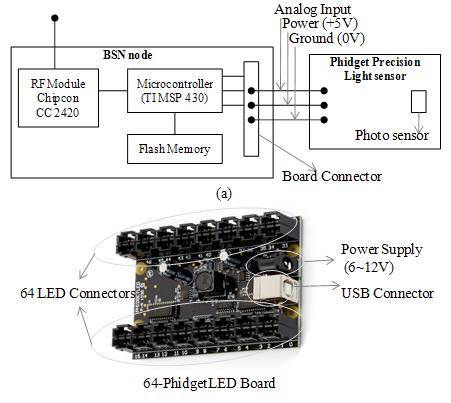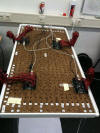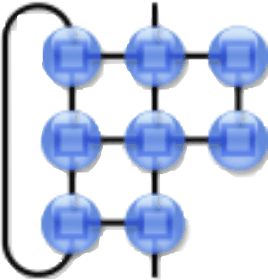|
|
|
System Architecture and Networking (SAN) |
| Eindhoven University of Technology |
SOFIA project wins the Artemis Exhibition Award again at ITEA/ARTEMIS Co-summit in Ghent, Belgium as the best project out of 25 Artemis projects. This is the second ITEA/ARTEMIS award in a row for SOFIA!
Introduction
Smart Objects For Intelligent Applications (SOFIA) is funded through the European Artemis programme under the subprogramme SP3 Smart environments and scalable digital service.
The mission of SOFIA project is to create a semantic interoperability platform which enables and maintains cross-industry interoperability which is a platform for new services. Concurrently the solution will foster innovation while maintaining value of existing legacy multi-vendor interoperability platform.
Project Start Date: 01/01/2009
Project End Date : 31/12/2011
Check out our latest demo videos!
Resource/Service Management for a smart space composed of Smart-M3 and OSAS nodes (September 2011)
Smart Lighting System: Interoperability with resource budgets (October 2010)
Smart Lighting System: Interoperability (June 2010)
Context Aware Lighting (March 2010)
People from SAN Group
- Dr. Tanir Ozcelebi
- Prof. Dr. Johan Lukkien
- Sachin Bhardwaj (Ph.D. Student)
SAN Contribution
Architecture
Development for the SOFIA Interoperability Platform
SAN group is doing research on providing interoperability of the SOFIA
architecture with extremely small capability devices (e.g. 8MHz CPU) and
reliability of the services provided. Our aim is to enhance and
incorporate the light-weight OSAS
(Open Service Architecture for Sensors) framework built by SAN into the SOFIA
architecture. OSAS has been initially developed as an event based programming
system for sensor networks. The resulting architecture will be capable of doing
resource monitoring, resource management and service quality management for
smart applications which are accessed through ownership policies. The indoor
smart space domain with smart lighting scenarios is of particular interest.
Envisioned architecture:

Preliminary research: Presentation (pdf)
Progress Summary (End of month 30):
- Use case definition and selection resulting in a deliverable titled "Use cases and related resources/services."
- Ontology development for indoor smart spaces completed.
- Contribution to the SOFIA Big Picture: A scalable SOFIA architecture. Smart nodes with extremely small capabilities (e.g. CPU, memory, storage space) such as wireless sensor nodes can join the IOP by means of a gateway.
- A novel illumination model is designed to control LED luminaries in a reading space, which is implemented by means of Smart-M3 KPs.
- The first demo using OSAS service architecture for low-capacity nodes is ready. This prototype is designed and implemented using several LED luminaries and wireless light sensors (see demo videos above)
- Power managed smart lighting application in a semantic interoperability architecture is developed and the measurements of delay performance are completed.
- Resource and service management scheme for the Smart-M3 platform was developed and implemented.
- SOFIA pilot released! We were able to incorporate many device and software platforms, their corresponding programming languages, operating systems and message formats in a single SOFIA pilot demo. Interoperability actually works!
Equipment:
- The LED luminaries consist of 6x6 square LED arrays and they are connected to PhidgetLED-64 (LED actuators). The LED actuators and wireless light sensors are integrated into the OSAS environment as virtual nodes. The KP (implemented in Linux OS) discovers wireless light sensors and wired 64 PhidgetLED actuators in the smart space. Given the user preferences, the KP adjusts the light output dynamically in order to maintain a certain level of illumination in the activity space, regardless of changes in external illumination (e.g. daylight). The designed prototype is tested with several user preferences and external light settings. (See our various demo videos above.)
The wireless light sensor and the 64-PhidgetLED actuator nodes:

Some pictures from the demo:
Presentations (background and current research):
Energy effect of on-node processing of ECG signals
Service and Resource Discovery in Smart Spaces Composed of Low Capacity Devices
On Smart Spaces: Status and Challenges in the Programming of sensor networks
Publications:
-
Sachin Bhardwaj, Tanir Ozcelebi, Johan Lukkien, Richard Verhoeven, "A Smart LED Lighting System Based on a Novel Illumination Model". submitted to IEEE Transactions on Consumer Electronics.
-
Sachin Bhardwaj, Aly A. Syed, Tanir Ozcelebi, J.J. Lukkien, "Power-managed Smart Lighting Using a Semantic Interoperability Architecture", IEEE Transactions on Consumer Electronics (TCE), Vol.57, Issue 2, pp. 420-427, May, 2011.
-
Sachin Bhardwaj, Tanir Ozcelebi, Richard Verhoeven, Johan Lukkien, "Delay Performance in a Semantic Interoperability Architecture" in IEEE SAINT, Workshop on Semantic Interoperability for Smart Spaces (SISS), Munich, Germany, July 18-21, 2011.
-
Sachin Bhardwaj, Aly A. Syed, Tanir Ozcelebi, J.J. Lukkien, "Power-managed Smart Lighting Using a Semantic Interoperability Architecture", IEEE International Conference on Consumer Electronics (ICCE), Las Vegas, USA, January 2011.
-
Sachin Bhardwaj, Tanir Ozcelebi, Johan Lukkien and Richard Verhoeven, "Semantic Interoperability in a Heterogeneous Smart Lighting System" in Proceedings of the IEEE SCC, the 1st International Workshop on Semantic Interoperability for Smart Spaces (SISS 2010), Riccione, June 2010, Italy.
-
Sachin Bhardwaj, Tanir Ozcelebi and Johan Lukkien, "Smart Lighting Using LED Luminaries", in Proceedings of the IEEE PerCom 2010, SmartE Workshop, March 2010, Mannheim, Germany.
Links
| System Architecture and Networking | ||
| Eindhoven University of Technology | ||
| SOFIA project official website | ||
|
|
i-Lighting the World |
Last update: 22/9/2011

_small.jpg)

_small.jpg)
_small.jpg)
_small.jpg)

